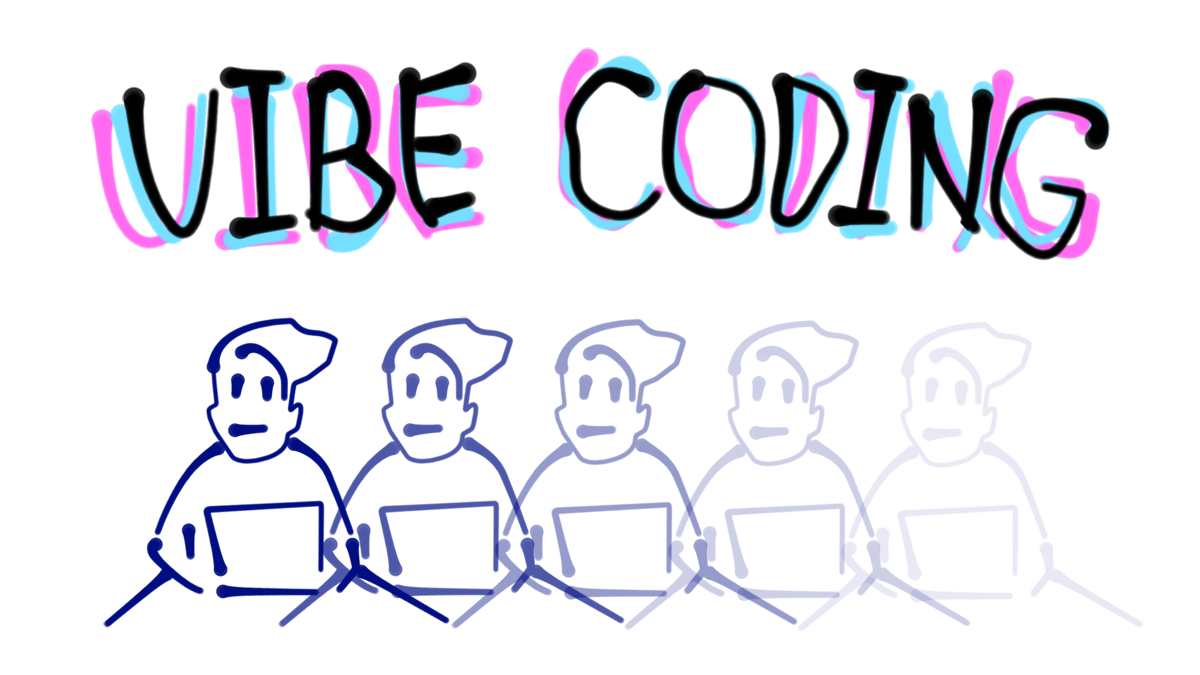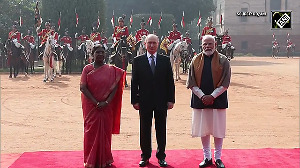'Could the impending new crisis, vibe coding, similarly create not a disaster like what befell Indian handlooms during the Industrial Revolution but another opportunity like what the Y2K crisis created?' asks Ajit Balakrishnan.

It's early days yet, but a new form of programming is taking root where the coder or software developer merely needs to describe the overall 'vibe' -- the intent, look and feel, and the desired behaviour of a software in plain language -- and the code is automatically written by a computer.
Andrej Karpathy, one of the cofounders of OpenAI, was the first to talk about 'vibe coding' in a post on X this February: 'There's a new kind of coding I call vibe coding, where you fully give in to the vibes... and forget that the code even exists... so I barely even touch the keyboard.'
When I read this, it struck me as something very similar to what we have seen in Indian history.
In the 1760s, when Indian cotton spinners were hard at work using their charkhas to spin raw cotton into cotton thread, which weavers then wove into cotton cloth, England witnessed the invention of spinning jenny.
This new machine allowed a single spinner to manage multiple spindles, dramatically increasing the amount of yarn they could produce compared to their usual spinning wheel.
This, along with automated weaving, led to massive growth in England's cotton cloth production, which came to be called the first Industrial Revolution.
Cheap, mass-produced textiles from Britain flooded the Indian market, making it difficult for locals to compete, resulting in widespread unemployment among spinners, weavers, and artisans.
Note the similarity to the promise of vibe coding, which could allow a single computer programmer to generate significant amounts of code much faster than manually writing it line by line.
This could dramatically increase output per person. In this way, just as the spinning jenny addressed the critical bottleneck of slow yarn production, vibe coding could speed up software development.
The spinning jenny also demanded lesser skill in cloth spinning than the charkha. Similarly, vibe coding could demand far fewer skills than traditional coding.
In viewing this technological innovation, should we, like Mahatma Gandhi, think: 'The spinning wheel represents to me the hope of the masses.'
The masses lost their freedom, such as it was, with the loss of the charkha.
The charkha supplemented the agriculture of the villagers and gave it dignity.
It was the friend and the solace of the widow. It kept the villagers from idleness.
The charkha included all the anterior and posterior industries -- ginning, carding, warping, sizing, dyeing, and weaving.
These, in their turn, kept the village carpenter and the blacksmith busy.
The charkha enabled the 700,000 villages to become self-contained.
With the exit of the charkha went the other village industries, such as the oil press. Nothing took the place of these industries.
Therefore, the villagers were drained of their varied occupations, creative talent, and what little wealth they brought them."
Should we worry that a technology trend like vibe coding could displace a substantial portion of India's five million plus computer programmers?
Their work is India's largest net foreign-exchange earner, with around $200 billion in export revenue.
Some say that this massive inflow of foreign currency also helps stabilise the rupee, finance imports, and build foreign-exchange reserves.
This sector is also the most significant driver of demand for office space in major cities like Bengaluru, Hyderabad, Pune, Chennai, Mumbai, and Delhi-NCR.
Large information-technology companies and global capability centres (GCCs) lease vast office space, fuelling construction and investment in commercial real estate; promoting consumer spending on goods and services; and boosting retail, automotive, electronics, and other consumer industries, along with the hospitality sector.
Overall urban development thus gets a major push.
So, as you can see, a lot is at stake as we contemplate a future driven by vibe coding.
In the early 1990s, when the computer boom started in India, there was fear and anxiety about the future of many jobs.
These long-drawn-out debates, particularly about the new technology's effect on the banking sector, threatened to sink India when the Y2K opportunity appeared and the United States and Europe suddenly needed hundreds of thousands of computer programmers to change code manually to address an immediate problem.
In brief: In the early days of computing, when memory and storage were expensive, programmers often represented years using only the last two digits, saving precious space.
However, as the year 2000 approached, there was widespread concern that when the date rolled over from '99' to '00', computer systems would interpret '00' as 1900 instead of 2000.
This could cause massive calculation errors involving dates, affecting everything from banking systems, logistics, power grids, government records, manufacturing processes, and countless other critical systems.
There were fears of widespread system failures and societal disruption.
The only solution was a massive, global effort to review billions of lines of code, identify date fields, reprogram them to handle four-digit years, and rigorously test the changes.
This was incredibly labour-intensive but had a strict deadline: December 31, 1999.
Estimates for the total global cost of Y2K remediation range widely, often between $300 billion and $600 billion.
This colossal spending implied a massive mobilisation of computer programmers: Over a million people worldwide, the vast majority from India.
This ended up creating India's tech giants like Tata Consultancy Services and Infosys.
As you can see, what was seen as a possible catastrophe became in India a stepping stone to its rise in global prominence, all because of the talented, large-scale workforce.
Could the impending new crisis, vibe coding, similarly create not a disaster like what befell Indian handlooms during the Industrial Revolution but another opportunity like what the Y2K crisis created?
Ajit Balakrishnan is devoting his life to unravel the connection between society and technology.
Feature Presentation: Aslam Hunani/Rediff.com
1











